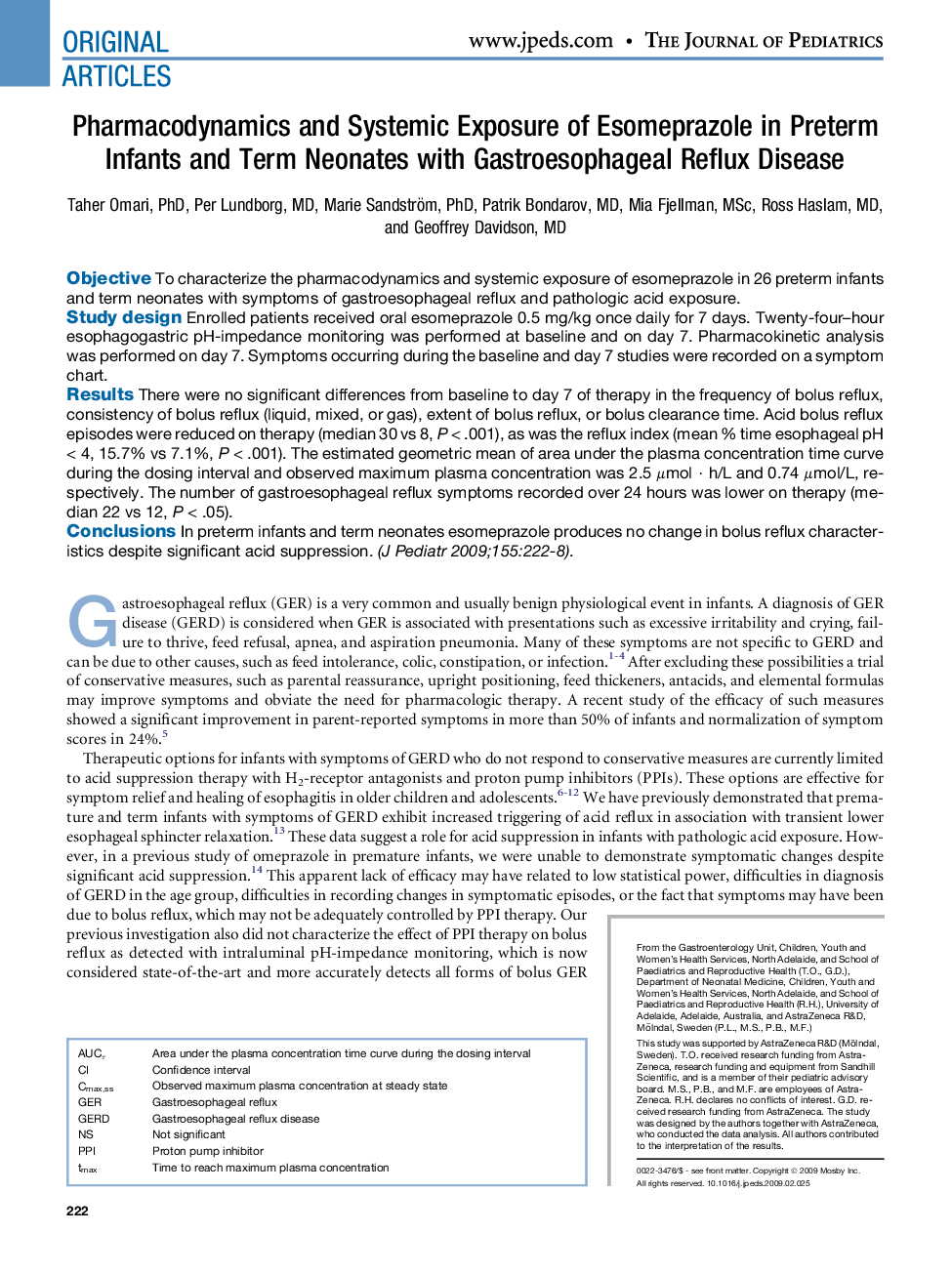| Article ID | Journal | Published Year | Pages | File Type |
|---|---|---|---|---|
| 4167697 | The Journal of Pediatrics | 2009 | 7 Pages |
ObjectiveTo characterize the pharmacodynamics and systemic exposure of esomeprazole in 26 preterm infants and term neonates with symptoms of gastroesophageal reflux and pathologic acid exposure.Study designEnrolled patients received oral esomeprazole 0.5 mg/kg once daily for 7 days. Twenty-four–hour esophagogastric pH-impedance monitoring was performed at baseline and on day 7. Pharmacokinetic analysis was performed on day 7. Symptoms occurring during the baseline and day 7 studies were recorded on a symptom chart.ResultsThere were no significant differences from baseline to day 7 of therapy in the frequency of bolus reflux, consistency of bolus reflux (liquid, mixed, or gas), extent of bolus reflux, or bolus clearance time. Acid bolus reflux episodes were reduced on therapy (median 30 vs 8, P < .001), as was the reflux index (mean % time esophageal pH < 4, 15.7% vs 7.1%, P < .001). The estimated geometric mean of area under the plasma concentration time curve during the dosing interval and observed maximum plasma concentration was 2.5 μmol · h/L and 0.74 μmol/L, respectively. The number of gastroesophageal reflux symptoms recorded over 24 hours was lower on therapy (median 22 vs 12, P < .05).ConclusionsIn preterm infants and term neonates esomeprazole produces no change in bolus reflux characteristics despite significant acid suppression.
